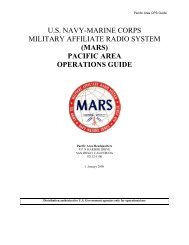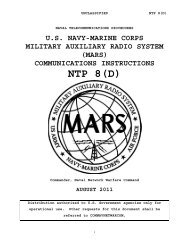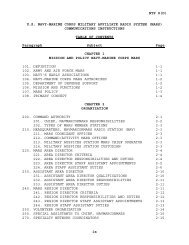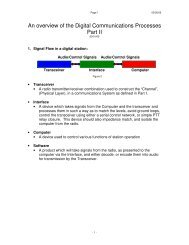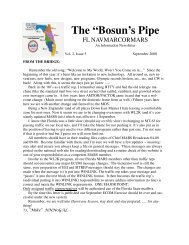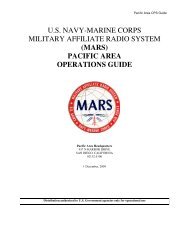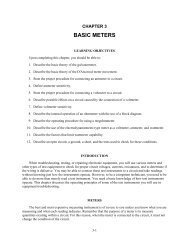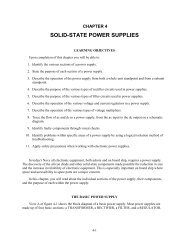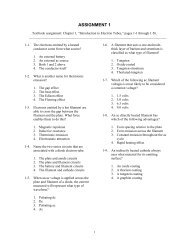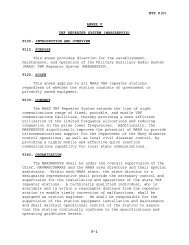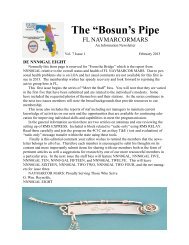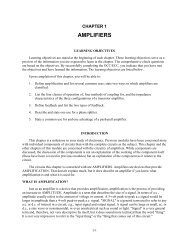Create successful ePaper yourself
Turn your PDF publications into a flip-book with our unique Google optimized e-Paper software.
Q20. The waveforms shown below are the input and output of an overdriven triode.TYPES OF BIASINGThere are two main classes of biasing—FIXED and SELF. In a tube circuit that uses fixed bias, thegrid-bias voltage is supplied from a power source external to the circuit. You are already familiar withbattery bias, which is one form of fixed bias. When fixed bias is used in a circuit, it can be represented aseither a battery (fig. 1-21, view A), or as a conductor connected to -E cc (fig. 1-21, view B). Fixed bias israrely used in electronics today. Therefore, we will not discuss it further.Figure 1-21.—Fixed bias: A. Battery B. ConductorIn circuits using self-bias, the bias voltage is developed across a resistor in the cathode or grid circuitby tube current. There are two main methods of self-bias: cathode biasing and grid-leak biasing.Cathode BiasIn circuits using cathode bias, the cathode is made to go positive relative to the grid. The effect ofthis is the same as making the grid negative relative to the cathode. Because the biasing resistor is in thecathode leg of the circuit, the method is called CATHODE BIASING or CATHODE BIAS. A triodecircuit using cathode bias is shown in figure 1-22.1-30



